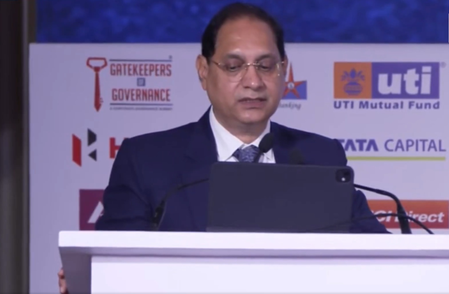
New Delhi, Jan 4 (IANS) It’s no secret that smartphones are constantly evolving. Every smartphone brand across the globe invests heavily into their R&D to be able to innovate the next best phone for their users.
One important feature of these phones that has undergone major changes over the years is the camera. From a mere 0.1 MP in the first ever mobile phone camera, to the 200 MP smartphone cameras of today, camera technology has come a long way.
However, the latest innovation in camera technology has evolved further, with periscope cameras coming out as the shiny new feature in flagship phones. So as they grow in popularity, is it safe to assume that the desirability of a higher megapixel count in flagship phones is slowly dying?
It’s a longstanding myth amongst smartphone users that the higher the number of megapixels in their camera, the better will be the output of images it’ll produce. More MP doesn’t necessarily equate to higher resolution. Interestingly, cameras with fewer MPs can sometimes produce better quality images than those with a higher MP count.
When it comes to flagship-level smartphone cameras, the quality of the pixels is generally more crucial than their quantity in a camera sensor. The impact on image quality from the size and caliber of the camera’s lens can be significant, often outweighing the effect of the sensor’s MP count. Another key point to keep in mind is how the camera’s image processor handles the photo data.
Many cameras are designed to auto-sharpen the image, which can sometimes make the picture quality worse, especially if it’s already been hit by diffraction. So, it’s not surprising to see a 100 MP mid-range phone camera producing lower quality photos than a 50 MP flagship-level camera.
The quality of a picture is influenced by a combination of hardware, software, and personal preferences. Understanding the workings of smartphone cameras, their individual components, and how their performance is measured can shed light on why megapixels aren’t the sole determinant of camera quality. The f-stop value or aperture, which is the opening through which light reaches the sensor, is closely linked to the sensor size.
When it comes to zoom, most smartphone cameras typically offer Digital Zoom rather than Optical Zoom. While Optical Zoom involves actual lens movement, Digital Zoom relies on software algorithms to enlarge pixels. Image stabilisation in smartphones usually comes as Digital, which might result in minor video shakiness. In contrast, Optical Image Stabilisation, using small gyroscopes to move the camera lens, helps maintain image steadiness.
Until just last year, the main strategy for boosting image quality in premium-level smartphones was to ramp up the megapixel count. However, in the realm of high-end smartphones, the trend is now leaning more towards enhancing the overall image quality instead of just upping the number of pixels. Top smartphone brands are encouraging this by introducing the periscope camera in their newer frontrunners from this year.
Periscope camera technology improves zoom capabilities without making smartphones bulkier. It works like a submarine’s periscope, bending light at a right angle, which allows for more lenses and power in a slim casing. Unlike conventional telephoto lenses that offer 2x or 3x zoom, periscope lenses deliver between 5x and 10x optical zoom without adding to the phone’s thickness.
This enables capturing high-resolution photos of far-off subjects, leading to crisper images. Moreover, periscope cameras can produce high-quality pictures without needing to rely on a higher megapixel count.
This underscores the notion that spending money on unnecessary pixels is not cost-effective. It’s wiser to invest in a flagship smartphone that has a camera with superior lens quality, a larger sensor, and a more efficient image processor, similar to what you’d find in a telephoto lens.
–IANS
na/




